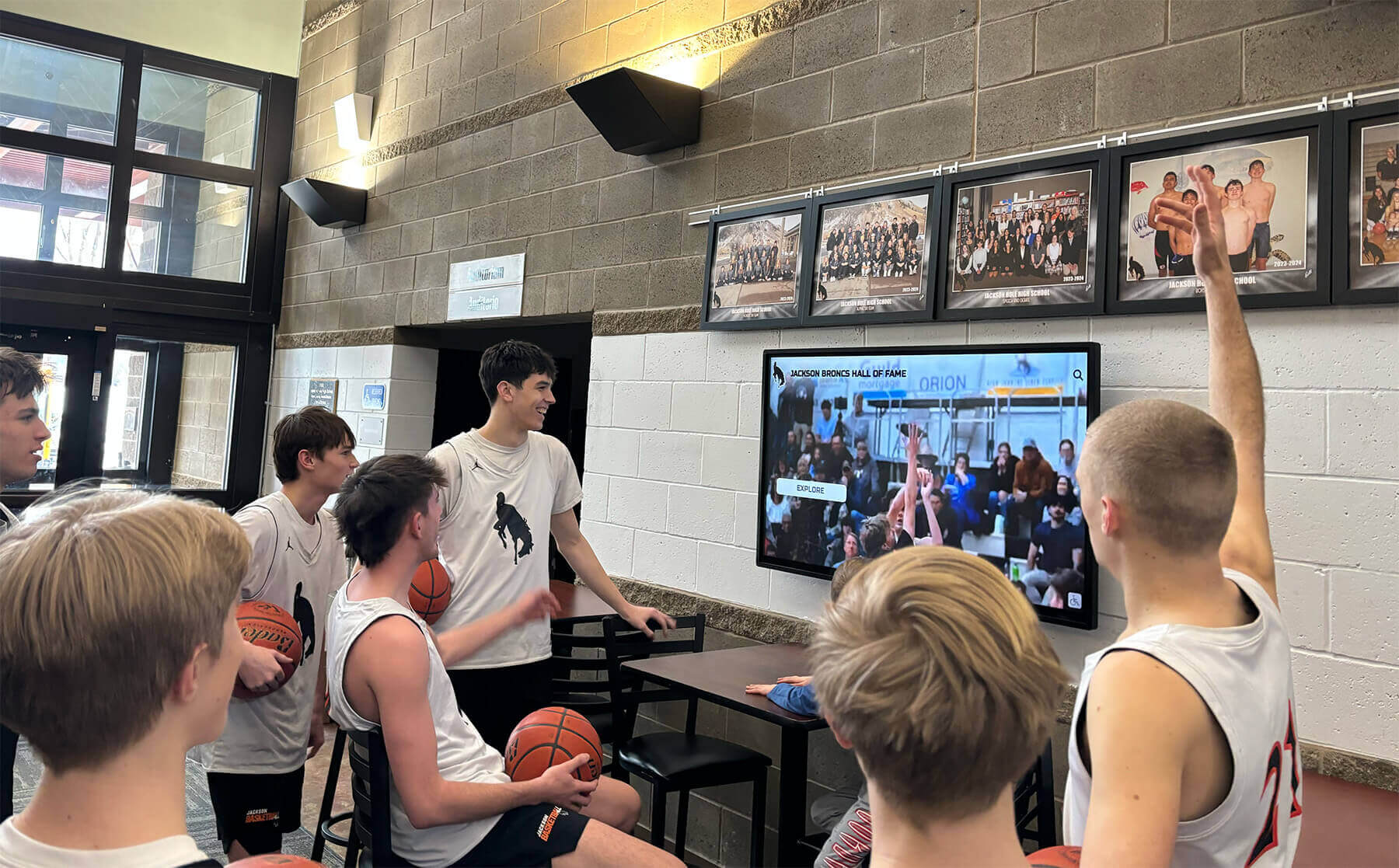Key Takeaways
Comprehensive guide to basketball high school records including essential categories to track, modern recognition systems, and how to inspire future athletes through effective record-keeping and digital displays.
Understanding the Importance of Basketball High School Records
Basketball generates rich statistical data that captures both individual excellence and team achievements in ways few other sports can match. The game’s continuous action, clear individual contributions, and multiple scoring opportunities create comprehensive records that tell complete stories about athletic programs.
Why Basketball Records Matter for Your Program
Student Motivation Through Concrete Goals: When a sophomore basketball player sees the school’s career scoring record stands at 1,847 points, that number transforms from an abstract concept into a tangible target. They can calculate what averaging 16 points per game over 28 games across three seasons would mean for their pursuit. Records provide specific, measurable benchmarks that transform vague aspirations into focused training objectives.
According to the National Federation of State High School Associations, state athletic associations across the country maintain official record books specifically to bring proper recognition to high school athletes who achieve outstanding performances. This institutional support demonstrates how seriously the education community takes record-keeping.
Building Program Identity and Tradition: Basketball programs with documented records spanning decades develop strong identities around their history. Current players understand they’re not simply playing a season—they’re contributing to a legacy that extends back generations and forward into the future. This connection to tradition creates program cultures where excellence becomes expected.

Recruiting and Program Development: Prospective athletes and their families evaluate programs through visible evidence of past success. Comprehensive records demonstrating consistent development of high-level performers signal effective coaching, competitive schedules, and developmental environments. Digital recognition displays provide instantly accessible evidence of program quality that influences recruiting decisions.
Recognition and Appreciation: Athletes dedicating years to basketball deserve acknowledgment when they achieve remarkable accomplishments. Proper record-keeping ensures outstanding performances receive appropriate recognition rather than being forgotten after seasons end. This validation motivates current athletes while inspiring teammates and younger players.
Historical Preservation: Athletic achievements represent important institutional history worth preserving alongside academic accomplishments. Comprehensive records document how programs evolved, playing styles changed across eras, and individual excellence emerged within team contexts.
Essential Basketball Record Categories
Comprehensive basketball record systems track achievements across multiple dimensions, ensuring diverse contributions receive appropriate recognition.
Individual Offensive Records
Basketball offensive records celebrate the scoring excellence that often defines memorable players and seasons.
Career and Season Scoring Records:
- Career Points: Total points accumulated across high school career (typically 3-4 years of varsity play)
- Season Points: Total points scored in a single season
- Single-Game Points: Most points scored in an individual game
- Career Points Per Game: Scoring average across entire varsity career
- Season Points Per Game: Scoring average for one season
- Consecutive Games Scoring 20+ Points: Sustained scoring excellence
The 1,000-point milestone represents basketball’s most celebrated individual achievement at the high school level. Schools using touchscreen displays for basketball achievement recognition can celebrate these milestones immediately while providing comprehensive profiles that inspire underclassmen.
Shooting Excellence Records:
- Field Goals Made: Total successful field goals (career, season, game)
- Three-Point Field Goals: Three-pointers made (career, season, game)
- Field Goal Percentage: Overall shooting accuracy with minimum attempts threshold
- Three-Point Percentage: Long-range shooting accuracy
- Free Throw Percentage: Accuracy from the free-throw line
- Consecutive Free Throws Made: Longest streak without a miss
- Free Throws Made: Total successful free throws (career, season, game)
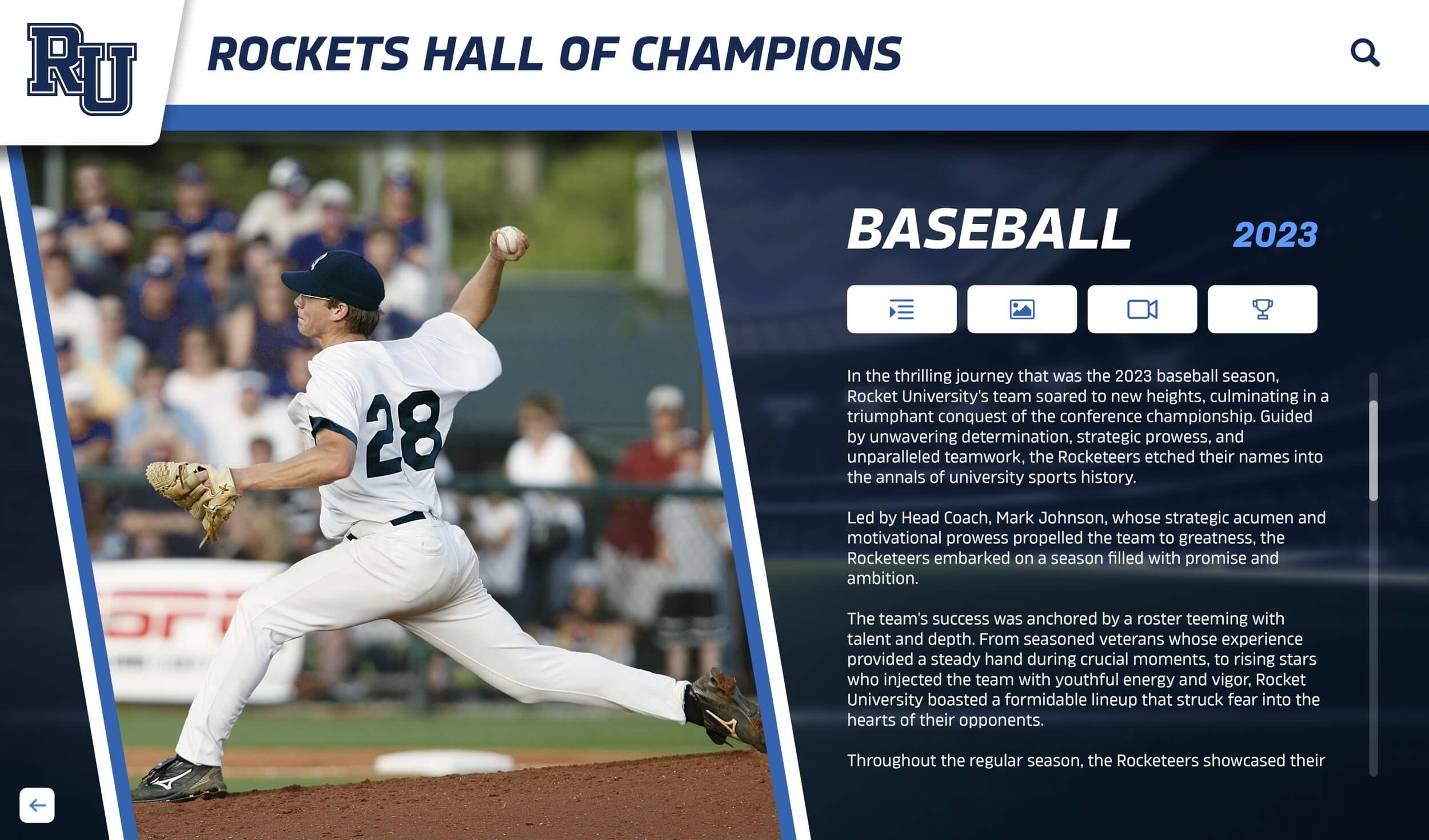
Playmaking and Offensive Efficiency:
- Career Assists: Total assists over entire career
- Season Assists: Assists in a single season
- Single-Game Assists: Most assists in one game
- Assists Per Game: Assist average (career, season)
- Assist-to-Turnover Ratio: Measure of ball-handling efficiency
- Double-Doubles: Games with double-digit performance in two statistical categories
- Triple-Doubles: Games with double-digit performance in three categories
Individual Defensive and Rebounding Records
Defensive achievements often receive inadequate recognition despite their critical importance to team success. Comprehensive record systems document defensive excellence across multiple categories.
Rebounding Records:
- Career Rebounds: Total rebounds over entire career
- Season Rebounds: Rebounds in a single season
- Single-Game Rebounds: Most rebounds in one game
- Rebounds Per Game: Rebounding average (career, season)
- Offensive Rebounds: Tracking second-chance opportunities created
- Defensive Rebounds: Tracking possessions secured
Defensive Achievement Records:
- Career Steals: Total steals across career
- Season Steals: Steals in one season
- Single-Game Steals: Most steals in individual game
- Career Blocks: Total blocked shots
- Season Blocks: Blocks in one season
- Single-Game Blocks: Most blocks in one game
- Defensive Player Awards: By season or career
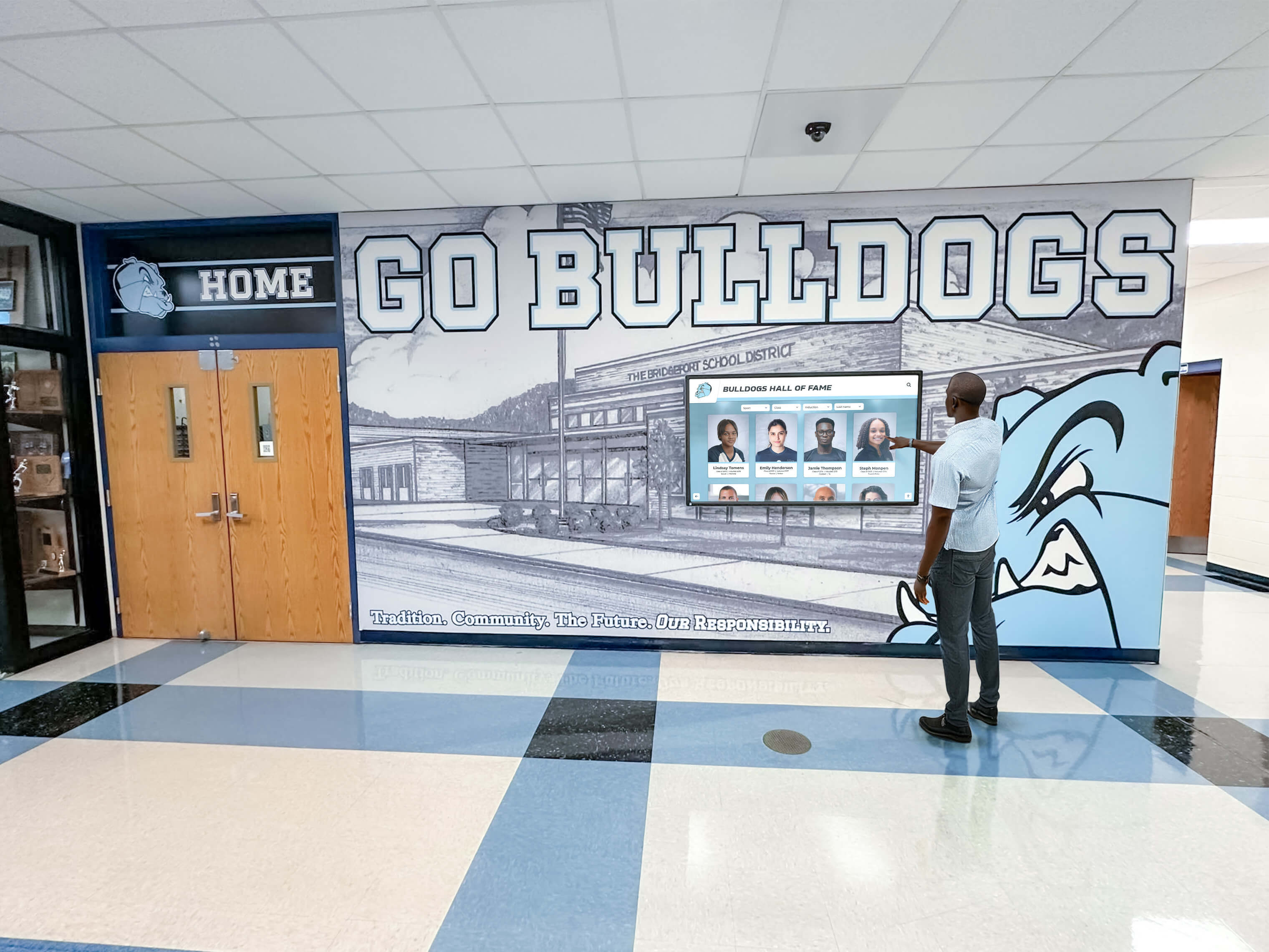
Multi-Dimensional Excellence: Recognizing well-rounded players who excel across multiple categories:
- Players achieving 1,000 points + 500 rebounds
- Players achieving 1,000 points + 500 assists
- Players achieving 1,000 points + 200 steals
- Players leading team in multiple statistical categories in single season
- Players earning all-conference honors in multiple seasons
Team Performance Records
Team records celebrate collective achievement representing contributions from entire rosters, coaching staffs, and program cultures.
Win-Loss Records:
- Most wins in a single season
- Best winning percentage in a season
- Longest winning streak (overall)
- Most consecutive home wins
- Most consecutive conference wins
- Undefeated seasons (if achieved)
- Best conference record in a season
- Winning percentage by decade or era
Team Offensive Records:
- Most points in a single game
- Highest scoring average for a season
- Most combined points in a game (both teams)
- Largest margin of victory
- Most consecutive games scoring 70+ points
- Season field goal percentage record
- Season three-point percentage record
- Season free throw percentage record
- Most assists in a game/season
Team Defensive Records:
- Fewest points allowed in a game
- Lowest points-per-game average for season
- Most games holding opponents under 50 points in a season
- Most consecutive games holding opponents under 60 points
- Season blocks record (team total)
- Season steals record (team total)
- Season forced turnovers record
- Largest defensive margin in a game
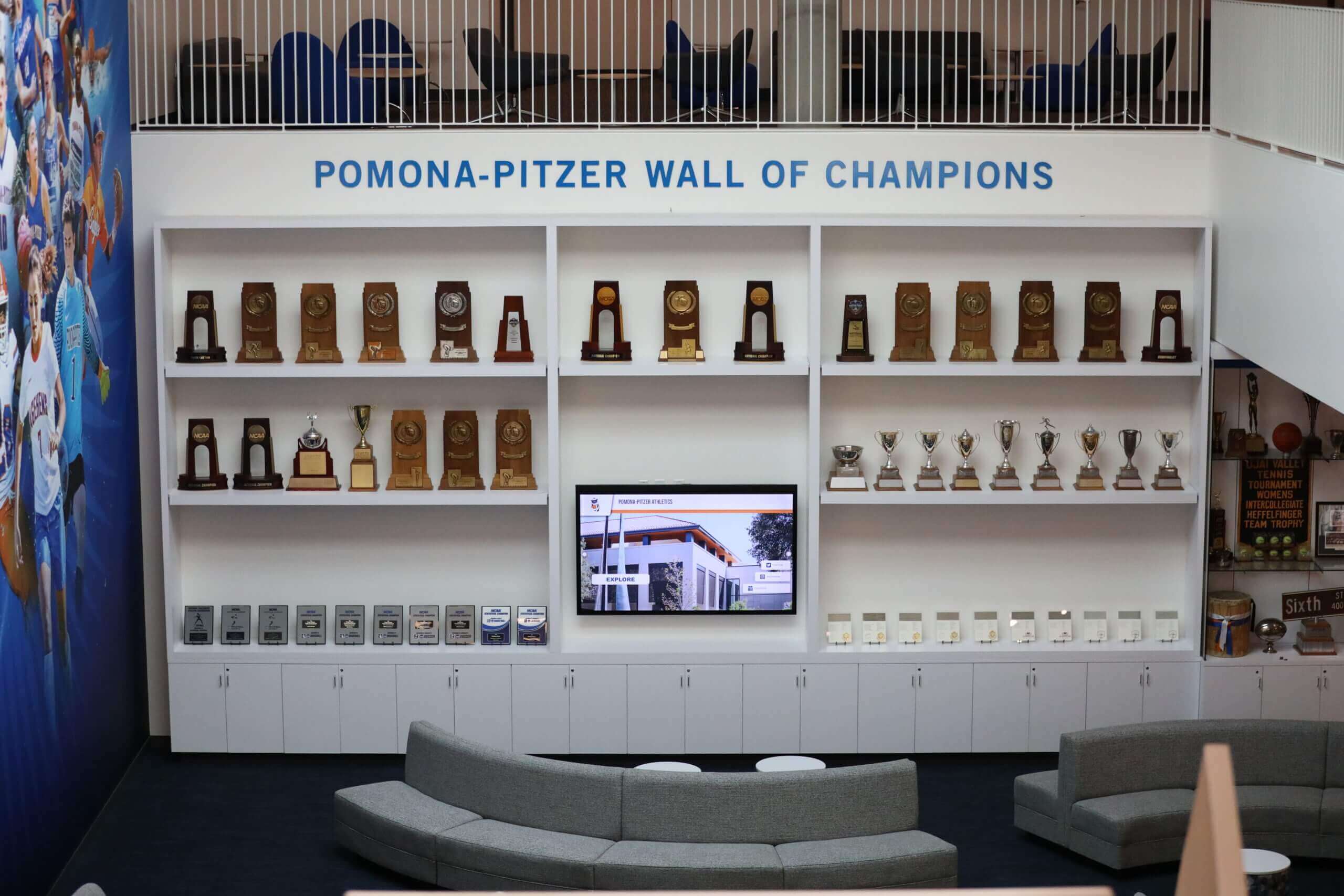
Championship and Tournament Records:
- Conference championships won (by year)
- Conference tournament championships
- State/regional tournament appearances
- State/regional championships won
- Tournament winning streaks
- Longest playoff runs
- Most tournament games won in single year
- Undefeated tournament runs
Programs implementing comprehensive recognition for athletic achievements create unified pride while honoring collective achievements alongside individual excellence.
Coaching Milestone Records
Outstanding coaches deserve recognition alongside player achievements, as their leadership and development create the environments where records become possible.
Coaching Achievement Categories:
- Career wins by head coach (overall and by gender if applicable)
- Winning percentage by head coach (minimum games threshold)
- Conference championships won as head coach
- State/regional championships won
- Tournament appearances coached
- Years of service milestones (10, 20, 30+ years)
- Players developed who earned college scholarships
- Players developed who scored 1,000+ career points
- Players developed who earned all-state honors
- Hall of fame inductions and major coaching awards
Schools using coaches appreciation recognition programs demonstrate how honoring coaching excellence alongside player achievements creates comprehensive program recognition.
Traditional vs. Modern Record Display Systems
Understanding the evolution from traditional to modern record management helps schools make informed decisions about recognition investments.
Traditional Physical Record Boards: Benefits and Limitations
Physical record boards have served schools for decades using various formats including painted wall displays, vinyl letter boards, engraved plaques, and magnetic systems with moveable components.
Space Constraints Challenge: Physical walls have finite capacity. As programs accumulate records over decades, schools face impossible choices: stop adding new achievements, remove historical records to make space for recent accomplishments, or create cluttered displays where no individual achievement stands out. Many athletic directors report this exact dilemma when programs with rich traditions generate achievements faster than wall space allows.
Update Challenges and Costs: Every record change requires ordering new materials, scheduling installation time, and paying for professional services or dedicating staff time to manual updates. Simple updates often take 2-4 weeks from ordering to completion, meaning championship season achievements may not appear until the following school year.
Typical costs include:
- Custom vinyl letters: $2-5 per character
- Professional installation: $150-300 per session
- Replacement panels: $200-500 when capacity is reached
- Annual maintenance: $500-2,000 for active programs
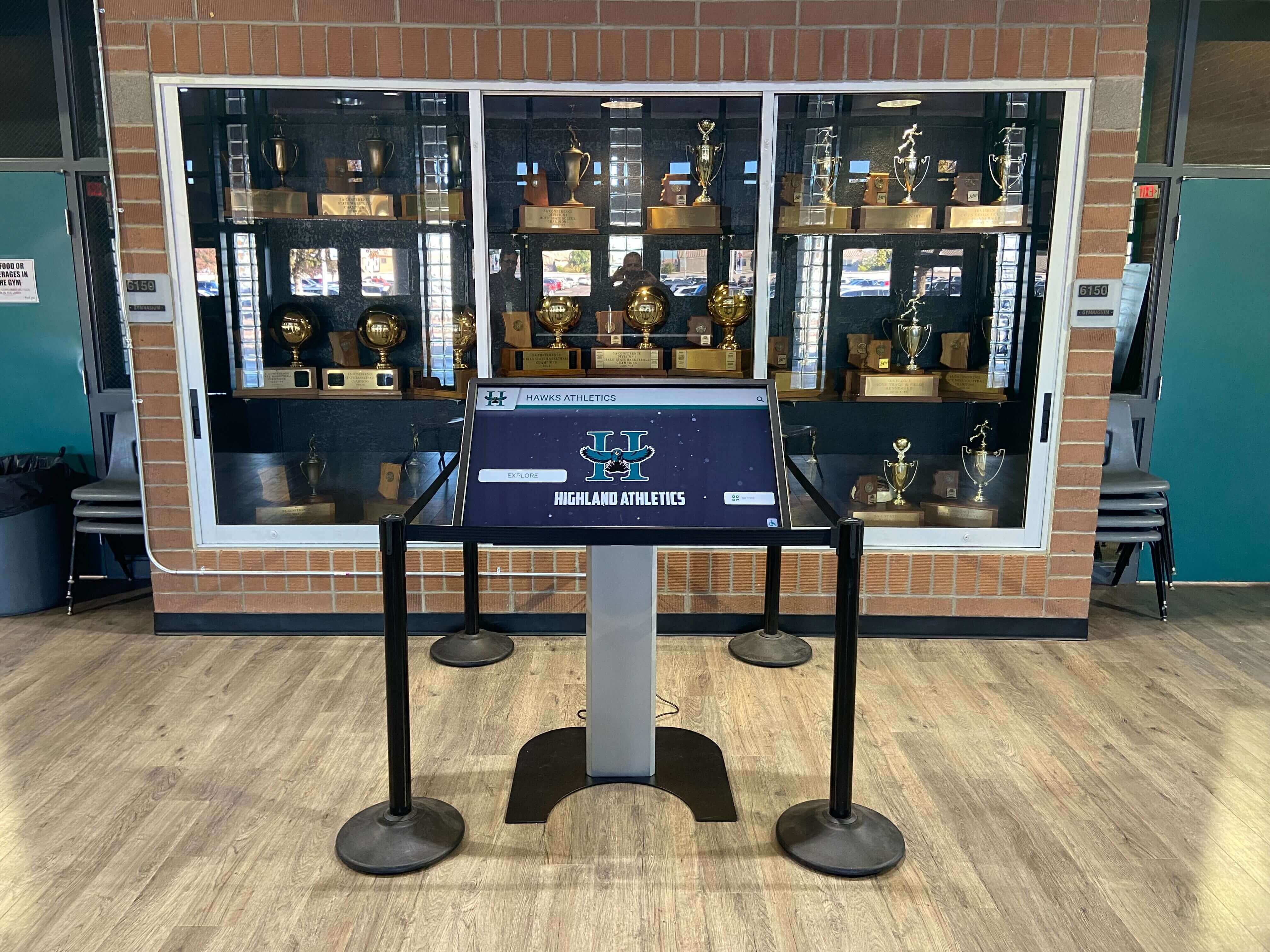
Physical Deterioration: Traditional boards fade from sunlight exposure, accumulate dust and dirt in high-traffic areas, suffer damage from equipment impact or vandalism, and require periodic refinishing or complete replacement after 10-15 years.
Limited Information Capacity: Space constraints force minimal information display—typically just athlete name, achievement, and year. Context, progression statistics, photos, and personal stories rarely appear on physical boards despite adding significant inspirational value.
Modern Digital Recognition Systems
Digital record boards overcome traditional limitations while creating enhanced engagement experiences that transform passive displays into interactive exploration opportunities.
Unlimited Capacity Advantage: Digital systems accommodate thousands of records without physical space constraints. Schools can recognize every achievement worthy of acknowledgment—1,000-point scorers from the 1960s receive equal prominence with last week’s record breakers. Multiple sports, both genders, various achievement types, and comprehensive historical records all coexist without competition for limited space.
Instant Updates: When a student breaks a scoring record during Friday night’s game, the display can be updated by Saturday morning using cloud-based content management systems accessible from any internet-connected device. This immediacy means recognition happens while excitement remains high rather than months later when traditional updates finally appear.

Rich Multimedia Content: Digital platforms enable comprehensive athlete and team profiles including:
- Professional photographs and game action shots
- Career statistics with year-by-year progression
- Video highlights of memorable performances and championship moments
- Written profiles sharing personal stories and career narratives
- Post-graduation achievements and current status
- Multiple photos showing athlete development over time
- Coaches’ testimonials and peer recognition
Interactive Exploration: Touchscreen interfaces invite engagement through search functions finding specific athletes or records, filtering by sport/year/category/achievement type, photo galleries browsing through program history, video playback of championship moments, and detailed statistical breakdowns enabling comparisons across eras.
Mobile and Remote Accessibility: Web-based viewing extends recognition beyond physical displays, allowing athletes to share achievements with family through social media while alumni can access program information from anywhere in the world. This extended reach amplifies recognition impact far beyond campus visitors.
Lower Long-Term Costs: While digital systems require higher initial investment ($5,000-15,000 typically), they eliminate ongoing per-update costs that accumulate with traditional systems. Most schools achieve cost neutrality within 3-5 years while gaining dramatically superior capabilities. Over 10 years, total costs often favor digital systems even before considering the additional benefits.
Solutions like Rocket Alumni Solutions digital record displays provide purpose-built platforms designed specifically for school athletic recognition rather than generic digital signage systems requiring extensive customization.
Implementing Effective Record-Keeping Systems
Successfully tracking and displaying basketball records requires systematic approaches addressing data collection, verification standards, and presentation strategies.
Establishing Record-Keeping Procedures
Primary Data Collection Sources:
- Official scorebooks maintained by statisticians at each game
- Game reports submitted by head coaches
- Statistics management software platforms (MaxPreps, state association systems)
- Media reports from newspapers and online sports coverage
- Historical yearbooks and program archives
- State athletic association record books
- Alumni submissions and historical corrections
The National Federation of State High School Associations provides guidelines noting that electronic devices may be used during games for recording and tracking statistics, and non-official scorers should compare records with official scorers to ensure accuracy.
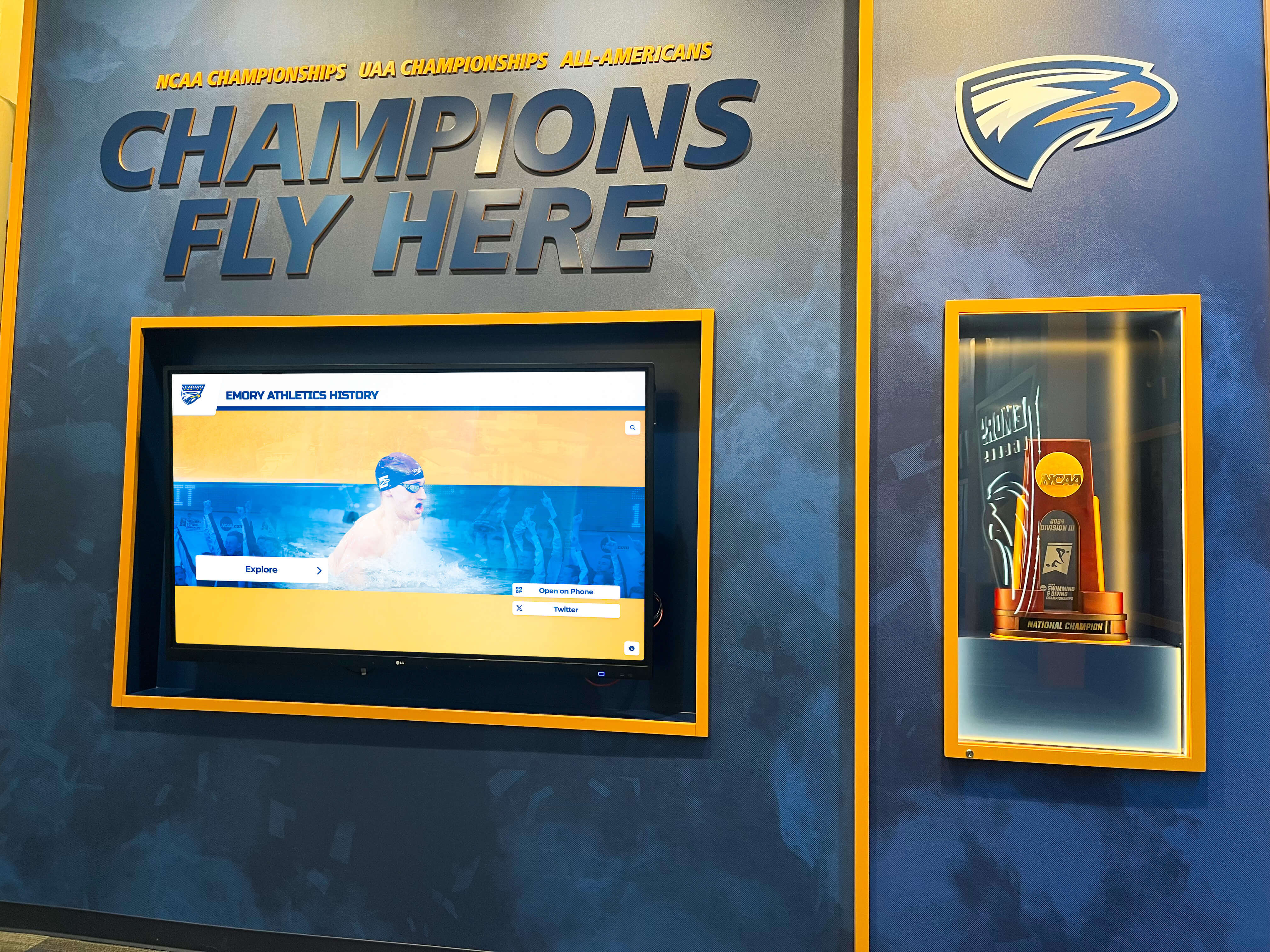
Verification Standards and Protocols: Establish clear criteria for record acceptance to maintain credibility:
- Minimum documentation requirements (official scorebook, media report, or two corroborating sources)
- Designated staff responsible for verifying accuracy before publication
- Review committee for disputed or unclear records
- Documentation retention policies ensuring future verification capability
- Correction procedures when errors are discovered
- Communication protocols for informing athletes and families
Record Categories Definition: Create explicit definitions preventing confusion and ensuring fair comparison:
- Minimum games played for statistical records (prevents outlier performances from limited sample sizes)
- Clarification whether career records count only varsity games or include sub-varsity competition
- Explicit definitions of subjectively-tracked statistics like “assists,” “steals,” or “deflections”
- Timeline periods for era-specific records (pre-three-point line era vs. modern era, different season lengths)
- Treatment of transferred players or athletes who competed at multiple schools
- Handling of records set during regular season vs. playoff games
Historical Records Research and Documentation
Many schools lack complete historical records, particularly for achievements from decades past. Comprehensive systems require research reconstructing program history.
Research Sources for Historical Data:
- Archived yearbooks (school libraries, alumni private collections, county historical societies)
- Newspaper microfilm or digital archives from local media outlets
- Athletic department filing cabinets, storage facilities, and old offices
- Retired coach recollections and personal record books
- Alumni association contacts and networks
- County or regional historical society resources
- Previous program materials (media guides, Hall of Fame programs, championship booklets)
- State athletic association historical archives
Digitization Process: Converting historical records to accessible digital formats:
- Photograph or scan relevant yearbook pages containing statistics and achievements
- Extract athlete names, statistics, contextual information, and graduation years
- Input data into structured databases or content management systems
- Organize and digitize historical photos for display inclusion
- Document sources for future verification reference and credibility
- Create metadata tags enabling efficient searching, filtering, and sorting
- Establish naming conventions ensuring consistency across decades
Schools implementing historical preservation through digital recognition displays report that alumni enthusiastically contribute information, photos, and stories once they see programs genuinely committed to honoring past achievements.
Content Development Strategies
Comprehensive Athlete Profiles: Transform statistics into compelling stories:
- Basic biographical information (graduation year, position, height, hometown)
- Career statistics with season-by-season progression showing development
- Notable single-game performances highlighting peak moments
- Team achievements during their career (championships, tournament runs, win-loss records)
- Individual honors (all-conference, all-state, all-region, special awards)
- Post-high school athletic career (college program, scholarship type, playing years)
- Current status and professional accomplishments
- Brief narrative describing playing style, impact on program, and memorable moments
- Quotes from the athlete reflecting on their experience
- Quotes from coaches highlighting character and contributions beyond statistics
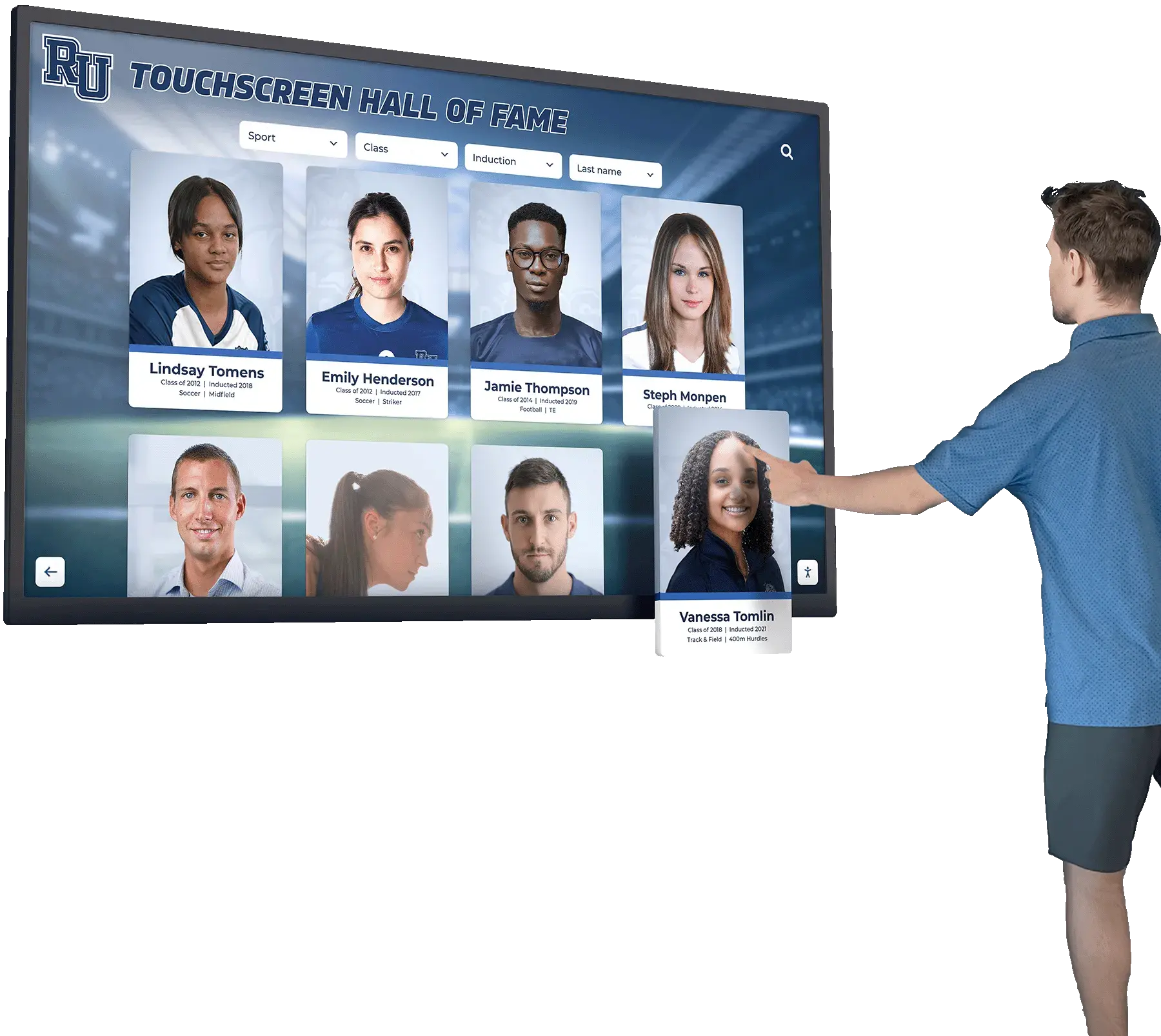
Visual Content Best Practices: Quality photography dramatically improves presentation and engagement:
- Professional or semi-professional game action shots capturing athletes in competition
- Posed portraits in uniform for consistent presentation
- Team photos from championship seasons
- Historical photographs showing program evolution across decades
- Recognition ceremony photos when records were achieved or milestones celebrated
- Current photos of historical record holders for “where are they now” content
- Candid photos capturing authentic moments and team culture
Multimedia Enhancement: Video and audio content creates immersive experiences:
- Game highlights showing record-breaking performances and championship moments
- Interview clips with athletes reflecting on careers and achievements
- Audio recordings of historic radio broadcasts for significant games
- Documentary-style features about program history and evolution
- Tribute videos created for recognition ceremonies and senior nights
- Coaches’ video testimonials about athlete development and character
Writing Guidelines for Credibility: Consistent, professional writing maintains program credibility:
- Clear, concise language accessible to all audiences
- Error-free content with thorough proofreading before publication
- Consistent formatting and style across all profiles
- Appropriate tone celebrating achievement without exaggeration
- Inclusive language ensuring all athletes receive respectful recognition
- Avoidance of comparisons that diminish other athletes’ achievements
- Updates noting when information was last verified for accuracy
Creating Memorable Recognition Ceremonies
Beyond static displays, schools should create memorable moments when athletes achieve significant basketball milestones, turning statistical achievements into emotional experiences.
Real-Time Recognition During Games
In-Game Acknowledgment: When records break during competition, immediate recognition amplifies emotional impact and creates lasting memories:
- Public address announcement as achievement occurs or immediately after the play
- Scoreboard graphic displaying the new record and previous record holder
- Brief stoppage of play (if appropriate timing allows) for crowd acknowledgment
- Game ball presentation after the contest conclusion
- Photo opportunity on court with coaches and teammates immediately following game
- Social media posts during or immediately after games capturing excitement
- Local media notification for same-evening or next-day coverage
This immediate acknowledgment validates achievement while emotional intensity remains high, creating powerful moments athletes remember for life.
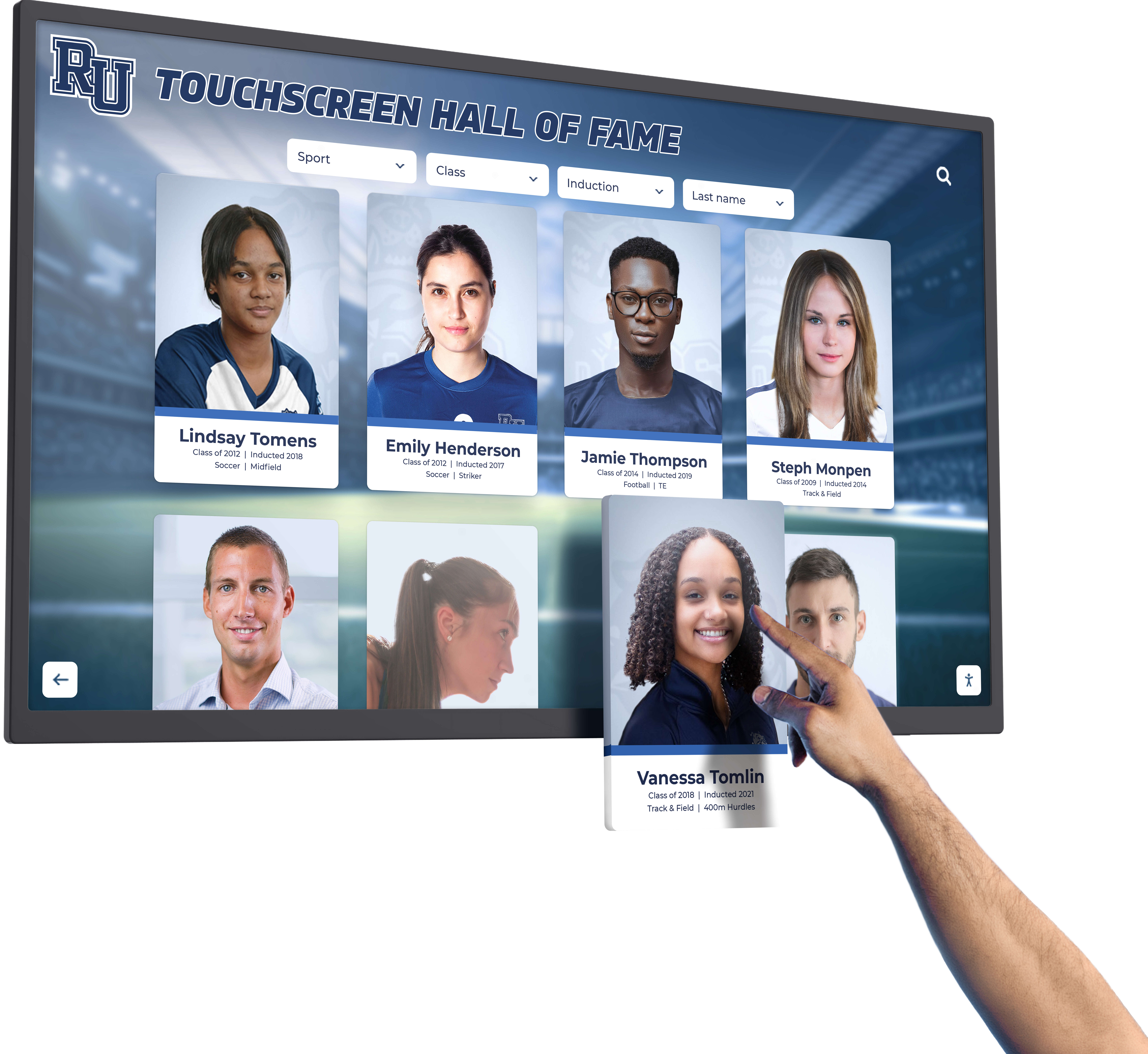
Halftime or Pre-Game Ceremonies: Planned ceremonies at subsequent home games allow comprehensive celebration:
- Family invitation to court for public recognition
- Video tribute on scoreboards showing career highlights
- Coach testimonial about athlete’s career, work ethic, and character
- Presentation of commemorative items (game ball, framed certificate, custom basketball)
- Photo opportunities with coaches, teammates, and family
- Standing ovation from home crowd
- Recognition announcement in game programs distributed to attendees
Digital Display Coordination: Integrate ceremonies with recognition display updates:
- Feature the honoree prominently on touchscreen displays before, during, and after the game
- Display career statistics and achievement context on scoreboards
- Capture ceremony photos for immediate addition to athlete’s digital profile
- Create shareable social media graphics during the event
- Update recognition displays to include the achievement before or immediately after the ceremony
- Provide QR codes at ceremonies linking to athlete’s digital profile for easy family sharing
Commemorative Items That Create Lasting Memories
Physical Recognition Athletes Keep: Tangible items athletes treasure permanently:
- Custom basketballs inscribed with achievement details, dates, and statistics
- Engraved plaques or trophies suitable for display
- Framed certificates or recognition documents signed by administrators
- Custom apparel (warmup jacket, championship t-shirt) acknowledging specific achievement
- Commemorative programs or certificates signed by coaches, teammates, and administrators
- Photo prints from ceremony or professional game action shots
Digital Recognition Artifacts: Modern keepsakes suitable for the digital age:
- High-resolution digital photo packages suitable for printing or sharing
- Professionally edited highlight videos with music and graphics
- Social media graphics families can share on personal accounts
- PDF certificates suitable for printing or digital display
- Direct links to permanent athlete profile pages for sharing with extended family
- Digital badges for use on college applications or LinkedIn profiles
Programs implementing comprehensive recognition strategies for athletic achievements create cultures where excellence receives consistent celebration rather than isolated acknowledgment.
Budget Considerations and Funding Strategies
Understanding costs and identifying funding sources enables schools to implement comprehensive record recognition systems without budget strain.
Digital Recognition System Investment
Hardware Investment Ranges:
- Entry-level system (43-50" touchscreen display): $4,000-6,000 installed
- Standard system (55-65" display): $6,000-9,000 installed
- Premium system (70-86" display): $12,000-20,000 installed
- Multi-display configuration: Costs scale with number of screens and locations
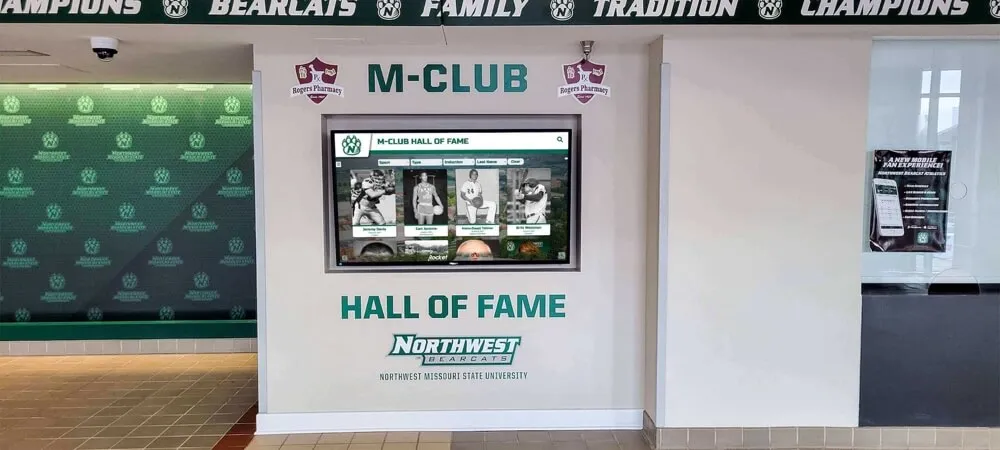
Software and Services:
- Cloud-based content management platform: $1,500-3,000 initial setup, $500-1,200 annual subscription
- Content development assistance: $1,000-5,000 depending on historical scope
- Training and ongoing technical support: Often included in software subscription
- Professional photography services: $500-2,000 for comprehensive multi-day session
Long-Term Cost Comparison Analysis:
Traditional system 10-year total cost:
- Initial board fabrication and installation: $4,000-8,000
- Annual updates and maintenance: $500-2,000 × 10 years = $5,000-20,000
- Replacement sections when capacity reached: $1,000-3,000
- Total: $10,000-31,000 with limited capacity, delayed updates, and minimal information
Digital system 10-year total cost:
- Initial hardware and software investment: $6,000-9,000
- Annual software subscription and support: $500-1,200 × 10 years = $5,000-12,000
- Total: $11,000-21,000 with unlimited capacity, instant updates, and rich multimedia content
Digital systems achieve cost parity within 5-7 years while providing dramatically superior recognition capabilities, lower maintenance burden, and enhanced engagement.
Funding Sources and Strategies
Athletic Booster Clubs: Booster organizations frequently fund facility improvements and recognition systems supporting athlete motivation. Present digital displays as investments enhancing program culture, recruitment advantages, and competitive positioning. Many boosters appreciate that digital systems recognize more athletes comprehensively rather than favoring only top performers.
Alumni Donations and Giving Campaigns: Former athletes often enthusiastically support recognition projects, especially when their own achievements will be honored. Create opportunities for naming rights (display sponsored by Class of 1985), dedicated content sections honoring specific championship teams, or recognition levels for various donation amounts.
Memorial Gifts and Tribute Opportunities: Families sometimes direct memorial contributions to athletic programs honoring deceased athletes, coaches, or supporters. Recognition displays accepting ongoing updates can honor individuals through permanent visibility that traditional plaques provide, with the added benefit of rich storytelling through photos and narratives.
Grant Opportunities:
- Educational technology grants supporting interactive learning tools and student engagement
- State athletic association grants for facility improvements and safety
- Community foundation grants supporting youth development and educational excellence
- Corporate foundation grants for educational institutions in their service areas
- Equipment vendor partnerships or sponsored pilot installations
Budget Reallocation:
- Discontinue purchase of traditional plaques, banners, and physical recognition items with ongoing costs
- Redirect trophy and award budget toward comprehensive digital recognition serving multiple purposes
- Reduce spending on replaceable physical displays requiring constant maintenance
- Consolidate multiple sport-specific recognition budgets into unified digital system
Phased Implementation Approach: Schools with budget constraints can implement systems strategically over time:
- Year 1: Initial display with current season records and recent achievements (2-5 years)
- Year 2: Gradual historical content expansion covering previous decade
- Year 3: Comprehensive historical research and content addition
- Year 4: Additional displays in other high-traffic locations as budgets allow
- Ongoing: Regular updates, content enhancement, and feature additions
Programs implementing effective fundraising integration with digital recognition displays often find these systems generate donor enthusiasm when presented as visible, lasting program improvements with broad impact.
Measuring Impact and Program Success
Effective recognition programs demonstrate value through both quantitative metrics and qualitative observations, justifying ongoing investment and support.
Quantitative Success Indicators
Usage Metrics for Digital Systems: For systems with analytics capabilities:
- Number of daily/weekly interactions with touchscreen displays
- Average time spent exploring content per user session
- Most-viewed athlete profiles, teams, and records
- Search queries revealing areas of highest interest
- Peak engagement times and usage patterns
- Mobile/web access statistics if remote viewing available
- Return visitor rates showing sustained interest
Performance and Participation Indicators: Observable changes potentially attributable to enhanced recognition:
- Athletic participation rates in basketball programs (tryout numbers)
- Number of athletes reaching significant milestones annually
- Improved team performance metrics (win-loss records, tournament advancement)
- Multi-season athlete retention rates
- Tryout numbers for freshman, JV, and varsity teams
- College recruitment interest and scholarship offers

Cost Savings Documentation: Documented financial benefits over time:
- Eliminated traditional board update expenses (materials and labor)
- Reduced staff time managing recognition (measured in hours annually)
- Avoided replacement costs for deteriorating physical displays
- Lower maintenance requirements compared to physical systems
- Reduced printing costs for recognition programs and certificates
Recognition Expansion Measurement: Measurable increases in recognition capacity and inclusivity:
- Number of records displayed (compared to previous physical boards)
- Number of athletes with comprehensive profiles in system
- Quantity of historical content digitized and made accessible
- Categories of achievement recognized beyond traditional scoring records
- Number of sports and programs sharing recognition space
Qualitative Assessment and Cultural Impact
Athlete Perspectives Through Surveys: Regular anonymous feedback from student-athletes provides crucial insights:
- How meaningful they find the recognition compared to previous systems
- Whether displays influence their goal-setting and motivation
- Ideas for improving recognition experiences and content
- Impact on program pride, team culture, and school spirit
- Perceived fairness and comprehensiveness of recognition across all athletes
Coach Observations on Culture: Coaches notice behavioral changes and cultural shifts:
- Do athletes reference records in conversations and training sessions?
- Are athletes setting specific statistical achievement goals?
- Has competitive intensity or training dedication noticeably improved?
- Do players demonstrate pride when discussing program history with recruits?
- Are underclassmen engaged with program traditions and legacy?
- Does recognition create healthy competition or problematic jealousy?
Family and Community Feedback: Broader stakeholder perspectives from multiple sources:
- Parent comments during games, ceremonies, and recognition events
- Alumni reactions during return visits to campus for reunions or games
- Community member feedback on facility improvements and program visibility
- Prospective student and family responses during recruitment campus visits
- Media coverage volume and tone regarding program achievements
- Social media engagement rates with posted recognition content
Program Culture Observations: The most important impacts are often qualitative cultural shifts:
- Has individual achievement recognition enhanced team cohesion or created division?
- Do current athletes feel genuinely connected to program history and tradition?
- Has broader school community perception of athletic programs improved?
- Do athletes demonstrate pride in representing the program beyond just winning?
- Are historical achievements referenced as inspiration during rebuilding or challenging seasons?
- Does the recognition system create inclusive culture or reinforce existing hierarchies?
Beyond Records: Comprehensive Basketball Recognition
While records represent significant achievements, comprehensive recognition programs celebrate diverse accomplishments ensuring all contributors receive appropriate acknowledgment.
Multi-Level Recognition Systems
Varsity Excellence: Traditional record categories for top-level performers remain important foundation of recognition, but comprehensive systems extend beyond varsity-only focus.
Junior Varsity and Developmental Recognition: Many schools limit recognition to varsity achievements, missing opportunities to motivate developing athletes:
- JV season scoring, rebounding, and assist leaders
- JV championships and tournament success
- Most Improved Player awards at sub-varsity levels
- Players making successful transitions from JV to varsity impact
- Developmental milestones reached (first varsity points, first start)
Recognizing success at all competitive levels demonstrates institutional commitment to player development while providing motivation for athletes not yet ready for varsity-level impact.
Academic-Athletic Excellence: The most effective programs integrate athletic recognition with academic acknowledgment:
- Academic All-Conference and All-State selections
- Student-athletes achieving honor roll while participating
- Team cumulative GPA achievements by season
- Scholar-athlete awards (maintaining specific GPA thresholds)
- Academic improvement recognition for athletes raising grades
- Student-athletes achieving academic milestones (National Merit, perfect attendance)
Schools implementing comprehensive student achievement recognition programs create inclusive cultures where excellence across all dimensions receives appropriate visibility.
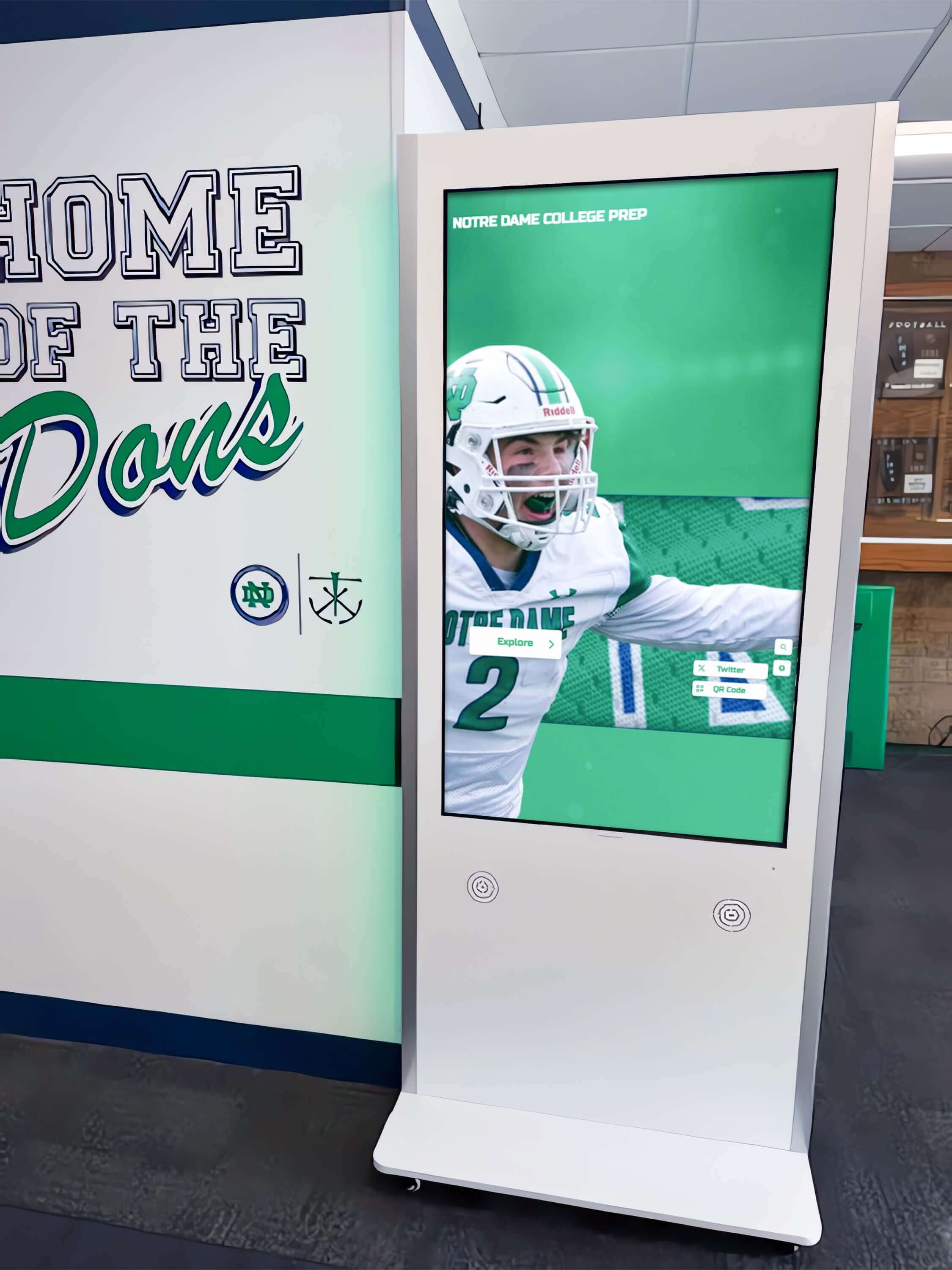
Leadership and Character Recognition:
- Team captains and leadership roles by season
- Sportsmanship award winners at conference and state levels
- Community service participation and hours contributed
- Teammate-voted leadership and inspirational player awards
- Resilience awards for athletes overcoming injuries or adversity
- Program ambassadors excelling in representing school values
Multi-Sport Athlete Recognition:
- Athletes competing in two or more sports annually
- Athletes achieving all-conference honors in multiple sports
- Three-sport and four-sport athlete acknowledgment
- Athletes balancing demanding schedules while maintaining excellence
- Career recognition for multi-sport contributions across four years
Alumni Career Tracking and Extended Recognition
Extend recognition beyond high school to demonstrate long-term program impact:
College Career Updates:
- Alumni currently playing at college levels (all divisions)
- College statistical achievements and milestones
- All-conference, all-region, and national honors at college level
- Academic achievements including degree completion and honors
- College championship participation and team success
Professional and Life Achievements:
- Alumni playing professionally (domestic or international)
- Career highlights and professional statistics
- International competition participation
- Post-playing career accomplishments in coaching, business, or other fields
- Community leadership and notable contributions
This extended tracking demonstrates program impact extending decades beyond high school while maintaining valuable alumni connections for mentorship, donations, and program support.
Conclusion: Building Legacy Through Comprehensive Recognition
Basketball high school records serve as powerful tools for program building, athlete motivation, institutional history preservation, and community engagement. From individual excellence represented by career scoring milestones to collective achievements of championship teams, comprehensive record-keeping creates tangible connections between past achievements, present excellence, and future aspirations.
Traditional physical record boards served schools adequately for generations, but modern digital recognition systems dramatically enhance what’s possible. Unlimited capacity enables honoring every achievement worth acknowledging rather than making difficult choices about whom to recognize. Instant updates ensure timely celebration when excitement remains high. Rich multimedia content tells complete stories beyond simple statistics. Interactive interfaces invite exploration impossible with static displays.
The most successful basketball recognition programs share common characteristics: they track diverse achievement categories beyond scoring, maintain accurate verified records, present information professionally through appropriate technology, create memorable recognition ceremonies connecting emotion to achievement, and leverage recognition strategically to build program culture and motivate current athletes.
Whether your school operates a small single-division program or comprehensive basketball department spanning multiple competitive levels, whether budget allows immediate comprehensive implementation or requires phased multi-year approaches, effective basketball record recognition delivers measurable value through enhanced athlete motivation, preserved institutional history, strengthened program identity, improved recruitment, and deeper community connections.
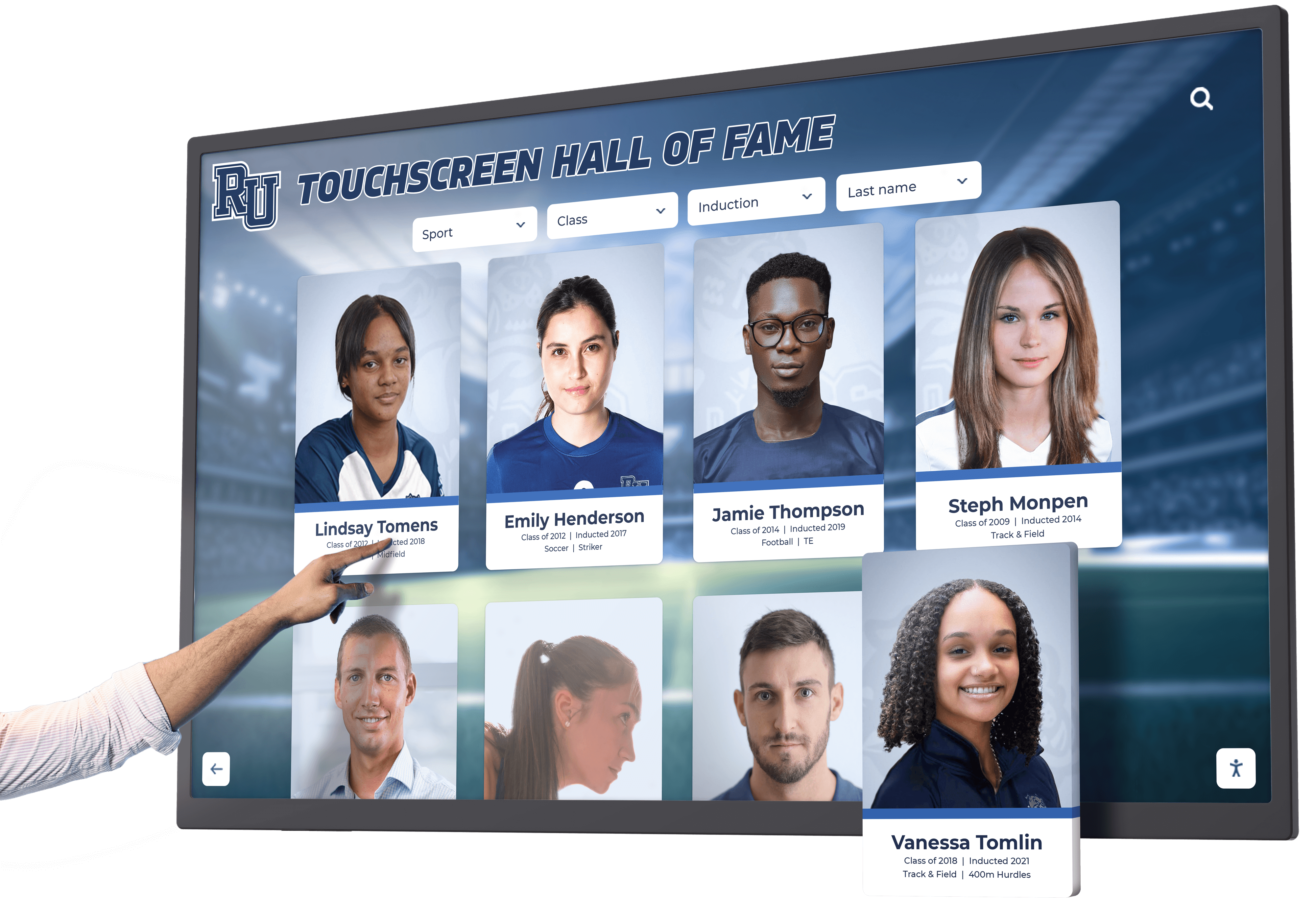
Transform Your Basketball Records Recognition
Modern solutions like those from Rocket Alumni Solutions enable schools to honor basketball excellence through intuitive digital recognition platforms designed specifically for educational athletics. These systems combine unlimited recognition capacity with simple content management, creating professional displays that inspire current athletes while preserving program history for future generations.
Stop limiting recognition to what fits on finite wall space. Stop waiting weeks or months for manual updates to traditional displays. Stop maintaining deteriorating physical boards requiring constant maintenance and replacement. Modern digital basketball recognition displays provide comprehensive solutions honoring achievement while motivating current and future athletes through visible proof that excellence receives lasting acknowledgment.
Visit Rocket Alumni Solutions to explore how digital recognition transforms basketball achievement celebration from static displays into engaging experiences that inspire excellence across generations of athletes. Your program’s achievements deserve recognition matching their significance—permanent, professional, powerful, and accessible.
Contact us today to discuss implementing recognition solutions that honor your basketball tradition while building the competitive culture where future achievements flourish and legacy grows stronger with each season.
